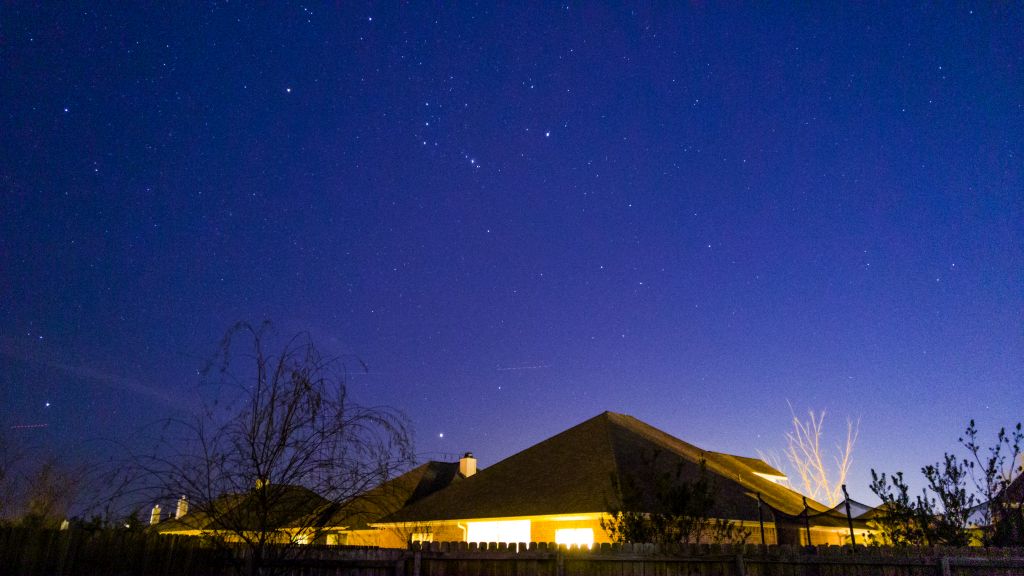
| Observer: | Tom Campbell |
| Location: | College Station, Texas (Long: 96°17'W Lat: 30°37'N) |
| Telescope: | Zhumell 12" f/5 Dobsonian |
| Eyepieces: | Explore Scientific 18mm (83x) Explore Scientific 11mm (136x) |
| Lenses: | Celestron Luminos Barlow (2.5x) |
| Weather: | The sky was mostly clear. Temperature was in the mid 40s (F) with a breeze that got a bit stronger as the evening progressed. |
My observing sessions have been few and far between this past year, so when I saw the forecast for mostly clear skies tonight, I knew I had to go out, despite the cool weather. After setting up my telescope outside to cool down (literally tonight), I realized I didn't even have a current observing list, so ran back inside to print out tonight's targets.
I bought one of those cheapy zoom lenses for my smartphone and have been having lots of trouble getting it to focus at infinity for night shots. I was playing with it this afternoon and discovered another dial on the lens that I hadn't realized was there. It was a bit stiff (perhaps the reason I had missed it earlier) but upon turning it, I saw it had distances listed underneath a little window. One of those distances was "infinity" so I wanted to try it out tonight and see if it was any good.
I first snapped a few pictures of Orion without the lens, as it was rising above my neighbor's house.

That turned out good, so I decided to try out the zoom lens on the Orion Nebula. Only the very brightest of stars show up on the viewscreen when the shot is in perfect focus, so it took quite a bit of trial and error to get my focusing adjusted. After several attempts, I had something resembling a focused image:
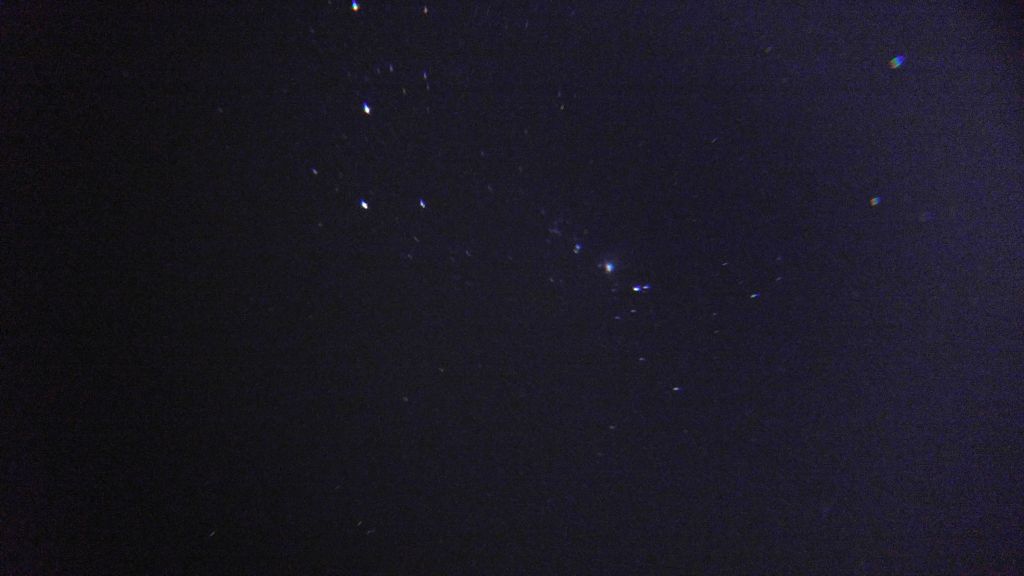
On my smartphone screen, it looked fine, but after bringing it inside to process, I noticed it wasn't nearly as good of a shot as I had hoped. Between the star trailing and the slightly out of focus shot, it was a disappointing result.
I tried again on the Pleiades. They were almost overhead by this point, so even aiming the camera proved difficult. I still wasn't able to get great focus. I will need to tweak the focus settings between the lens and smartphone a bit more, but I'm encouraged that I might be able to get some decent results soon.
Enough of the very amateur astrophotography. I could already feel the temperatures dropping quickly as the night wore on. Time to get to the telescope and do some observing.
| NGC 1778 | Auriga | Open Cluster | 8:25pm CST |
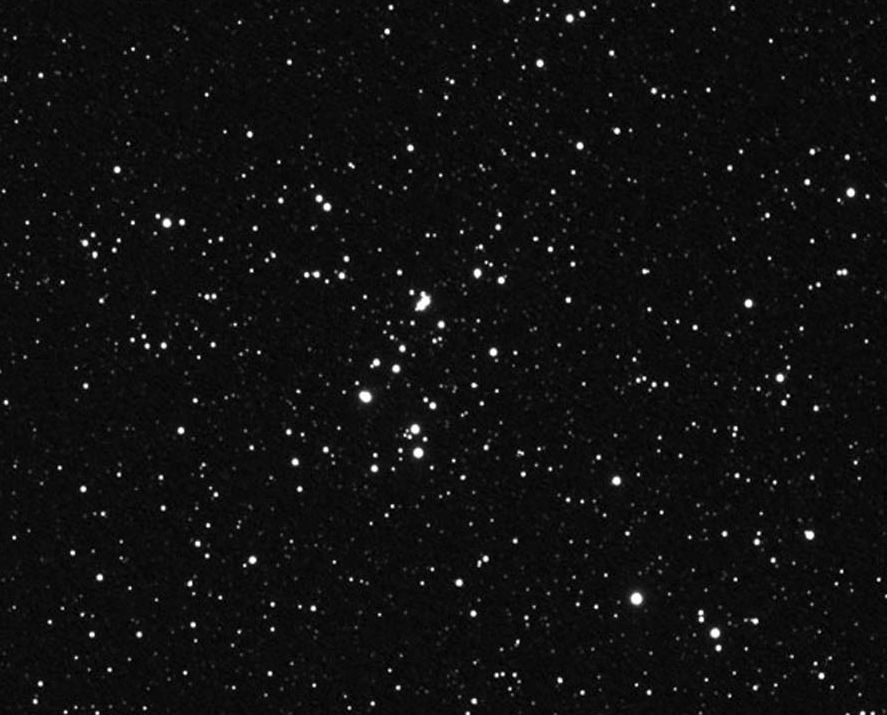 |
This cluster isn't overly impressive but not too bad. It's obvious at 84X. At 138X, I could detect about 15 stars. The brightest members form a right triangle. The overall shape of the cluster is a flattened hexagon. No color could be detected in any of the stars. |
||
| IC 2149 | Auriga | Planetary Nebula | 8:35pm CST |
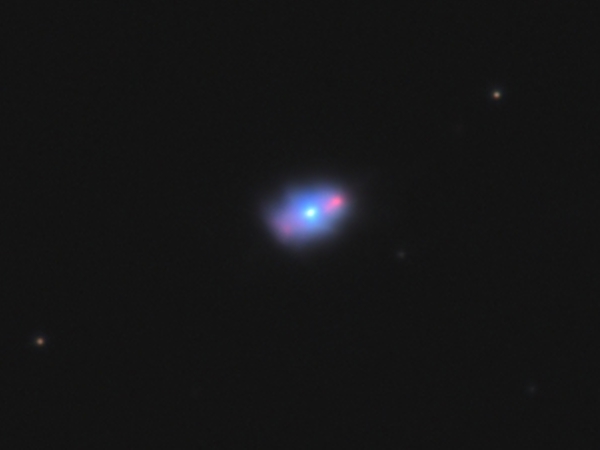 |
This planetary is not very large. At 345X, it began to resemble a fuzzy star. It is brighter than many of the nearby stars. It has a bright core quickly fading out at the edges. It doesn't apear quite circular, but is difficult to tell for certain. |
||
| NGC 1807 | Taurus | Open Cluster | 8:45pm CST |
 |
This was easy to find by starhopping off the bow stars of Orion. The cluster was easy to find at 84X. About 12-15 stars were visible. Most were bright and spread out. The overall shape reminded me of the Christian fish symbol. Where the tail and body of the fish meet, there is an equilateral triangle of stars, and one of those stars has a fainter companion. I wasn't able to detect any color in the stars. |
||
I was really pumped about nabbing three new (to me) objects off my observing list, so I thought I'd give myself a challenge. My Pocket Sky Atlas was showing me a couple of galaxies in Lepus that I hadn't yet seen. NGC 1964 and NGC 1832. I tried for quite a while and I was sure I was in the right field, but the light-polluted sky just wasn't offering enough contrast to pull them out. R Leporis wasn't too far away from NGC 1832, so I slid the scope over to revisit this beauty. |
|||
| R Lep (Hind's Crimson Star) | Lepus | Carbon Star | 9:30pm CST |
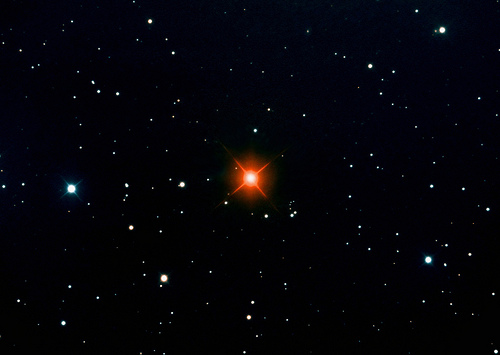 |
This star was a very deep reddish orange. It's not overly bright but the color makes it very easy to spot. This is one of the deepest red carbon stars I've seen. Very pretty! |
||
Wow, it was really starting to cool off outside. I went inside to grab a thermos of hot chocolate, then came back outside. While waiting for my eyes to re-adjust, I swung the telescope down to another favorite. |
|||
| M 41 | Canis Major | Open Cluster | 9:35pm CST |
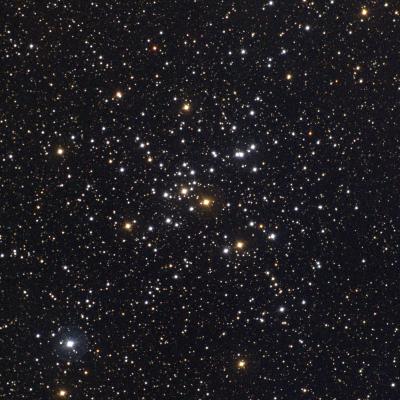 |
This cluster is gorgeous, filling the entire field of view. I could detect several dozen member stars in various spiral patterns. Nice! |
||
Okay, the hot chocolate wasn't doing the trick. The wind was starting to pick up a bit and made it miserable outside. I took another longing look at the beautiful sky before deciding to pack things up and head indoors. Since moving to Texas, I've become a cold-weather wimp.